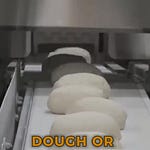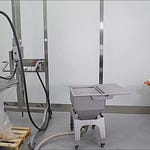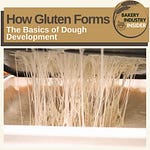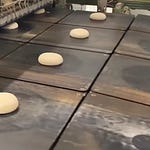Early Stages: Gas Expansion and Oven Spring
Yeast activity continues as dough temperature rises.
Gas production slows after 43°C and stops near 55°C.
Low thermal conductivity keeps the center cooler, allowing continued CO₂ production.
Gas expansion drives "oven spring," causing rapid rise.
Additional expansion comes from:
Steam pressure
Thermal expansion of air
Dough strength is critical; weak dough may collapse
Moisture Loss and Crust Formation
Surface moisture evaporates progressively.
Dehydration forms a crisp crust.
Maillard reaction creates golden color and flavor.
Starch gelatinization starts at ~60°C as granules absorb water.
Enzymes convert starch to dextrins and maltose, affecting texture and sweetness.
Foam-to-Sponge Transition and Final Setting
Dough begins as a foam: gas bubbles separated by gluten films.
Heat causes water loss and protein denaturation, making films rigid.
Gas pressures rupture films, forming a sponge-like crumb.
At 92–96°C, key changes complete:
Moisture loss
Starch gelatinization
Protein denaturation
Gas exchange
Continued baking enhances the crust and reduces residual moisture.











